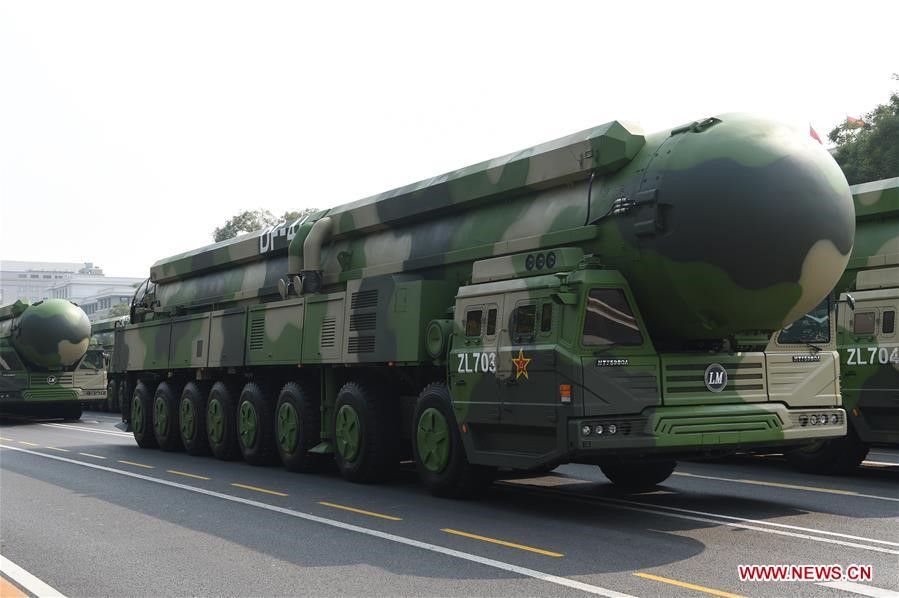After the Afghanistan debacle and the failure to timely move to dissuade Russia from invading Ukraine, President Biden may be on the verge of even more dangerous move.
According to the Arms Control Association, “President Joe Biden entered office with two objectives for nuclear weapons policy: declaring that “the sole purpose of our nuclear arsenal should be to deter—and, if necessary, retaliate against—a nuclear attack” and implementing the sole purpose policy as part of a broader effort to reduce the role of nuclear weapons. Although Biden has not clearly defined either goal, his support for both has signaled an intention to produce a significant shift in U.S. nuclear weapons policy.”
For this year, events in Russia and Ukraine have deterred Biden’s nuclear plans, but his plans remain, and his administration holds office for three more years.
Russia has the world’s largest nuclear arsenal, and the world’s most modern. China is rapidly increasing its atomic weapons, and, like Russia, has capabilities in some instances superior to the United States. North Korea is rapidly advancing its nuclear and ICBM programs. With or without a deal, Iran will soon become a nuclear power. Pakistan, a nation in which the Taliban has considerable influence, has an atomic weapons capability.
Despite these unpleasant and dangerous realities, the Biden Administration is seeking to reduce America’s nuclear deterrent. In the cross-hairs are initiatives begun under the prior Administration to upgrade U.S. forces in order to deter the growing threats from across the globe.
The U.S. nuclear weapons stockpile has been drawn down by more than 85 percent from its Cold War high. While Russia initially followed America’s lead and made similarly sharp reductions in its strategic nuclear forces, it retained large numbers of non-strategic nuclear weapons. Today, Russia is modernizing these weapons as well as its other strategic systems. Even more troubling has been Russia’s adoption of military strategies and capabilities that rely on nuclear escalation for their success. These developments, coupled with Russia’s seizure of Crimea and nuclear threats against our allies, mark Moscow’s decided return to Great Power competition. China, too, is modernizing and expanding its already considerable nuclear forces. Like Russia, China is pursuing entirely new nuclear capabilities tailored to achieve particular national security objectives while also modernizing its conventional military, challenging traditional U.S. military superiority in the Western Pacific. Elsewhere, the strategic picture brings similar concerns. North Korea’s nuclear provocations threaten regional and global peace, despite universal condemnation in the United Nations. Iran’s nuclear ambitions remain an unresolved concern. Globally, nuclear terrorism remains a real danger.
The 2018 Nuclear Posture Review noted that “While the United States has continued to reduce the number and salience of nuclear weapons, others, including Russia and China, have moved in the opposite direction. They have added new types of nuclear capabilities to their arsenals, increased the salience of nuclear forces in their strategies and plans, and engaged in increasingly aggressive behavior, including in outer space and cyber space. North Korea continues its illicit pursuit of nuclear weapons and missile capabilities in direct violation of United Nations (U.N.) Security Council resolutions. Iran has agreed to constraints on its nuclear program in the Joint Comprehensive Plan of Action (JCPOA). Nevertheless, it retains the technological capability and much of the capacity necessary to develop a nuclear weapon within one year of a decision to do so. There now exists an unprecedented range and mix of threats, including major conventional, chemical, biological, nuclear, space, and cyber threats, and violent nonstate actors. These developments have produced increased uncertainty and risk.”
It is a bizarre time to engage in an inexplicable policy of unilaterally reducing America’s deterrent.
U.S. Representative Mike Rogers (R-AL) and U.S. Senator Jim Inhofe (R-OK), ranking members of the House and Senate Armed Services Committee, are warning that this policy is ill-advised. According a statement they recently released, “If reports are accurate, President Biden’s decision to cut key U.S. nuclear modernization programs is yet another example of this administration’s inability to confront the dangerous reality of the strategic threats facing the United States and its allies. This projects weakness in the midst of the worst European security crisis in decades. The President appears to have chosen a path of unilateral disarmament. If these reports are accurate, the President’s decision to eliminate key capabilities flies in the face of the best military advice of our uniformed military leadership and does nothing to improve our security. It only reinforces global perceptions that the United States is unwilling to compete seriously with China or Russia.”
Photo: Dongfeng-41 nuclear missiles takes part in a military parade celebrating the 70th anniversary of the founding of the People’s Republic of China (PRC) in Beijing, capital of China, Oct. 1, 2019. (Xinhua/Xia Yifang)
